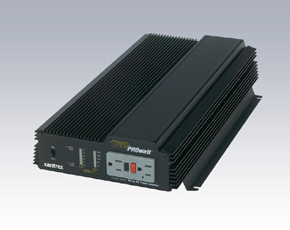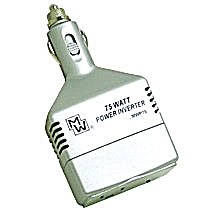Find out about the uses of power inverters in renewable energy generation
A Power Inverter is used to convert low voltage direct current (DC) voltage (typically from a 12/24V battery bank or direct from solar panels or wind turbines) into mains power (220-240V AC in the UK, 110V AC in USA). This is very important as it permits you to power domestic appliances such as computers, televisions, lighting and so on from your renewable energy source.
Low voltage DC appliances are available and typically used in mobile homes and caravans, but they are much more expensive, need to be bought in addition to existing appliances, and much thicker cable is required to carry the electricity around. Therefore power inverters are used to enable existing domestic appliances to be powered by a low voltage DC source. Inverters with conversion efficiencies in excess of 90% are available, so little power is lost going from DC to high voltage AC.

There are two different kinds of power inverter: a Modified Sine Wave Inverter (MSW) and a True Sine Wave Inverter (TSW). Modified sine wave inverters are much cheaper than true sine wave inverters, but the AC electricity they output is not as clean and can therefore cause interference with some appliances. True sine wave inverters usually output cleaner (i.e. less power spikes) power than even mains electricity and so all appliances can be powered by a TSW Inverter.

Mini Power Inverters are available rated down to as little as 75 Watts (continuous power output, 150 Watts surge) which can be plugged directly into a car's cigarette lighter socket to power a small device such as a GPS systems or personal stereo. These are available for as little as £20.
Pure sine wave inverters are available rated at many kilawatts and can cost tens of thousands of pounds.
Good quality inverters are fitted with low voltage protection to prevent batteries being discharged too deeply, and over voltage protection to prevent the inverter being damaged. The most expensive multi-kW inverters come with fitted LED displays to show the DC voltage and the amps being fed in.
http://www.reuk.co.uk/Power-Inverters.htm